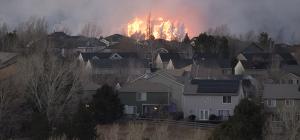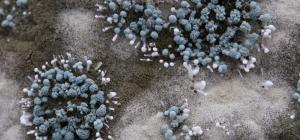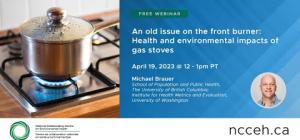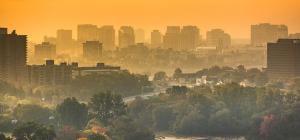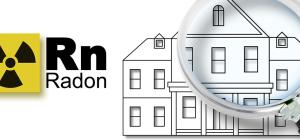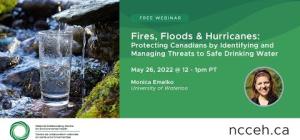
Do-it-yourself air cleaners: FAQs and additional resources

On January 26th, the NCCEH held a webinar highlighting our new evidence review entitled Do-it-yourself (DIY) air cleaners: Evidence on effectiveness and considerations for safe operation. Over the hour-long session, we compared the various DIY air cleaner designs in terms of cost effectiveness, energy efficiency, and noise generation. We also identified numerous considerations and resources to assist in building DIY air cleaners and deploying them safely in residential and non-residential settings, followed by an enthusiastic question-and-answer period. Here, we’re sharing some of the most frequently asked questions from audience members, along with others of relevance. You can also view the webinar recording and access the slides here.
What is a DIY air cleaner?
There are numerous DIY air cleaner designs, but the five covered in our recent evidence review are the most common configurations recommended by public health and other agencies. These cleaners are composed of a 20”x20” box fan and one or more furnace filters as shown in Figure 1 of our review. The filters should have a minimum efficiency reporting value (MERV) of at least 13.
Do DIY air cleaners work as well as a portable air cleaner that you can buy at a store?
Although MERV-13 filters have a lower filtration efficiency on a single pass compared to a high efficiency particulate air (HEPA) filter found in a commercial portable air cleaner, increasing air flow and running the device continually allows us to achieve comparable levels of air cleaning. Table 1 in our evidence review shows how DIY air cleaners compare to commercial devices in terms of clean air delivery rate, cost effectiveness, energy efficiency, and noise.
Why is it important to include a “shroud” on the DIY air cleaner?
All of the designs shown in Figure 1 of our review feature a cardboard cut-out on the front face of the fan. This is called a “shroud” and is a very important element to increase the efficiency of your DIY air cleaner. Without a shroud in place, some of the air pushed out by the fan is drawn back into the fan at the gaps in the corners. Previous studies have shown that including a cardboard shroud increased clean air delivery rate by nearly 40% for a simple one fan to one filter configuration.
What kinds of contaminants do DIY cleaners remove?
DIY air cleaners filter particulate matter out of the room air. Some examples of particulates are mould spores, pollen, bacteria and viruses, pet dander, and the particles produced during combustion, such as smoke from cooking, wildfires, and tobacco use. However, DIY air cleaners do NOT remove gaseous pollutants, such as volatile organic compounds, carbon monoxide, radon, or carbon dioxide. This is why air cleaners should be considered a supplement to good ventilation, not a replacement.
Are there any safety concerns with using a DIY device?
Attaching a furnace filter to a box fan means that we are using the fan in a way that the manufacturer did not intend. This has raised concerns that obstructing the fan could increase the risk of burns or fires. These concerns were recently investigated and it was found that the risk of burns or fires is low and temperature increases were within safety standards for electric fans. Nevertheless, BCCDC recommends using a newer box fan with a safety fuse and operating the fan with common sense precautions, such as avoiding obstruction and not leaving the device unattended.
What are the benefits of using a DIY box fan filter?
Portable air cleaners, including DIY designs, reduce exposure to indoor particulate matter. Although using a portable air cleaner may not be sufficient to eliminate the risk of particulate matter-related health effects, reducing the exposure will decrease the risk.
Using a DIY air cleaner can also help to keep you cool indoors as long as the temperature is below 35°C. Using fans when indoor temperatures are above 35°C speeds heat transfer to the body.
How do I know whether my DIY air cleaner is having an effect?
Measuring an air cleaner’s clean air delivery rate is difficult outside of a laboratory environment. However, users can quickly identify whether a DIY air cleaner is having an effect on indoor particulate matter using a particulate matter sensor. These small, mobile, low-cost sensors use light scattering to count particles in different size ranges, and can be used to understand whether PM levels indoors are decreasing relative to outdoors. If PM levels do not decrease when the air cleaner is turned on, you may need to increase the fan speed, increase the number of thickness of the filters, or add another device.
The US EPA has a detailed guidebook on how to choose, use, and interpret data from air sensors.
What do I need to know to build a DIY air cleaner?
There are numerous online tutorials that show how to build a DIY air cleaner (e.g., this EPA infographic on how to build a simple air cleaner). Regardless of what design or tutorial you follow, be sure to consider the following:
- Choose the right design for the space, considering size of the space and the number of cleaners likely needed.
- Use a fan shroud and a newer fan with a safety fuse.
- Use MERV-13 or higher furnace filters and make sure the DIY air cleaner is tightly taped together to prevent any air from bypassing the filters.
- Make sure the direction of airflow through the filter matches up with the direction of air flow through the fan.
- Position your air cleaner such that air can flow to and around it; keep away from curtains or furniture that could cause an obstruction.
- Change the filters when they become soiled or when you notice PM levels are not being controlled as well as before. Bag the soiled filters using a mask and gloves.
The COVID-19 pandemic showed the importance of indoor air quality. NCCEH has produced other related resources (e.g., our work on manual ventilation or using CO2 sensors as a public health tool), and aims to continue work in this area. Please join our mailing list to stay informed of our future projects.
Author
Angela Eykelbosh is an Environmental Health & Knowledge Translation Scientists at the NCCEH.

